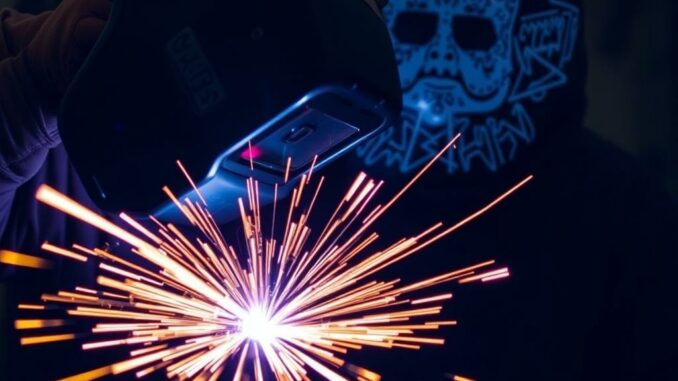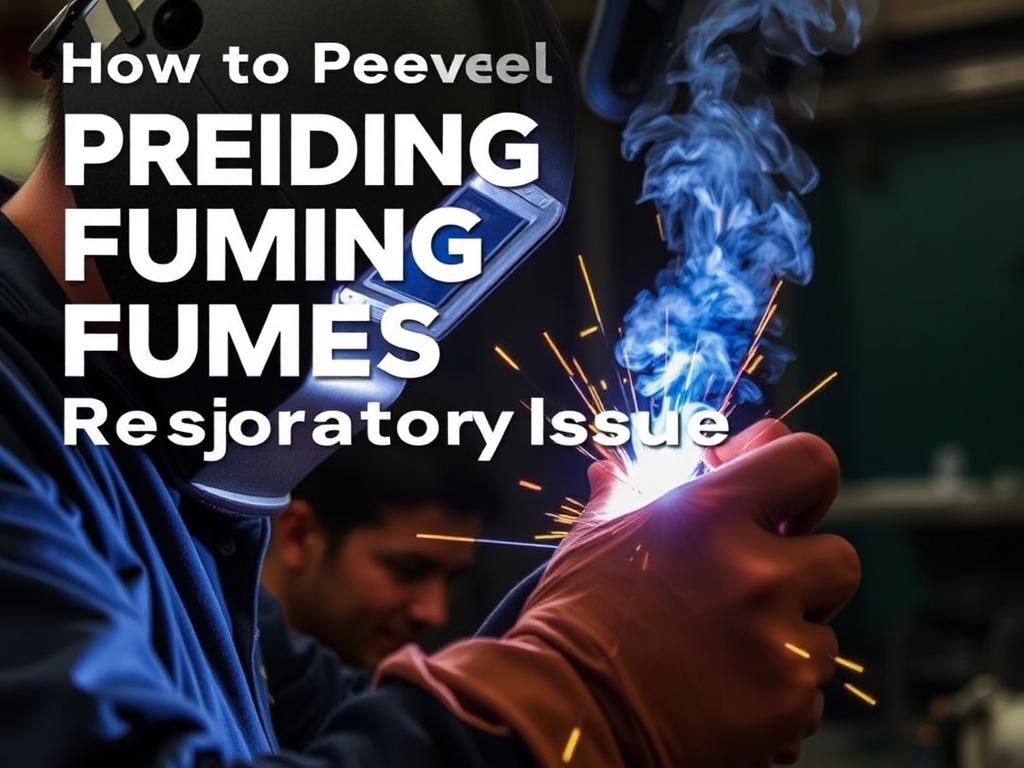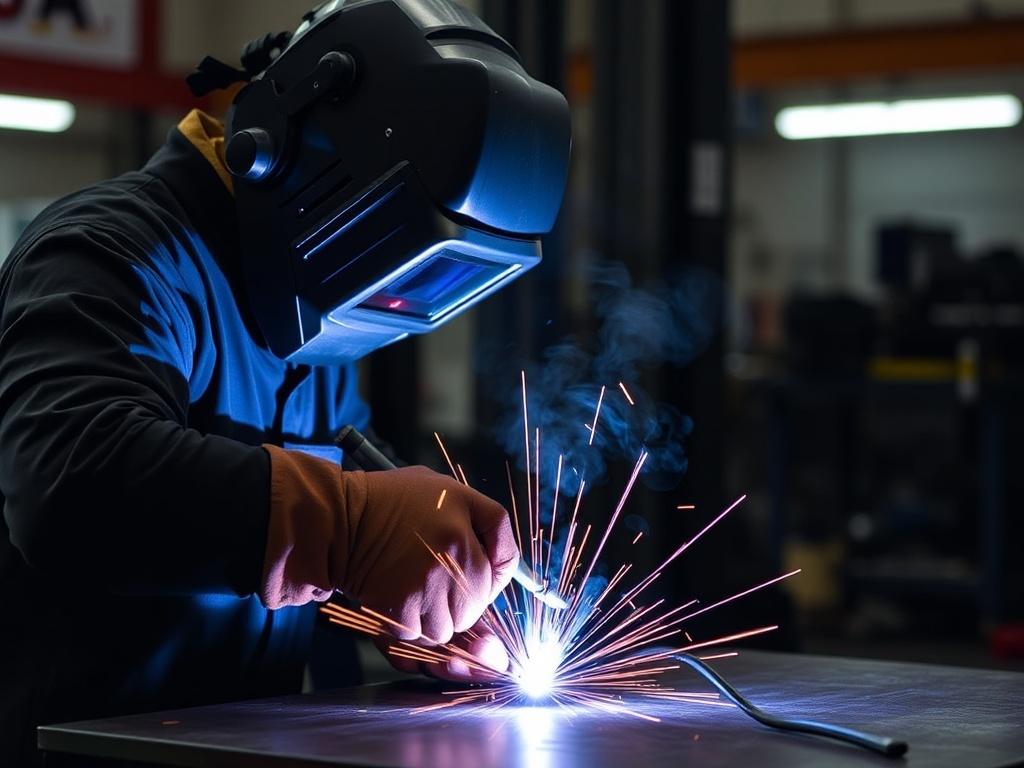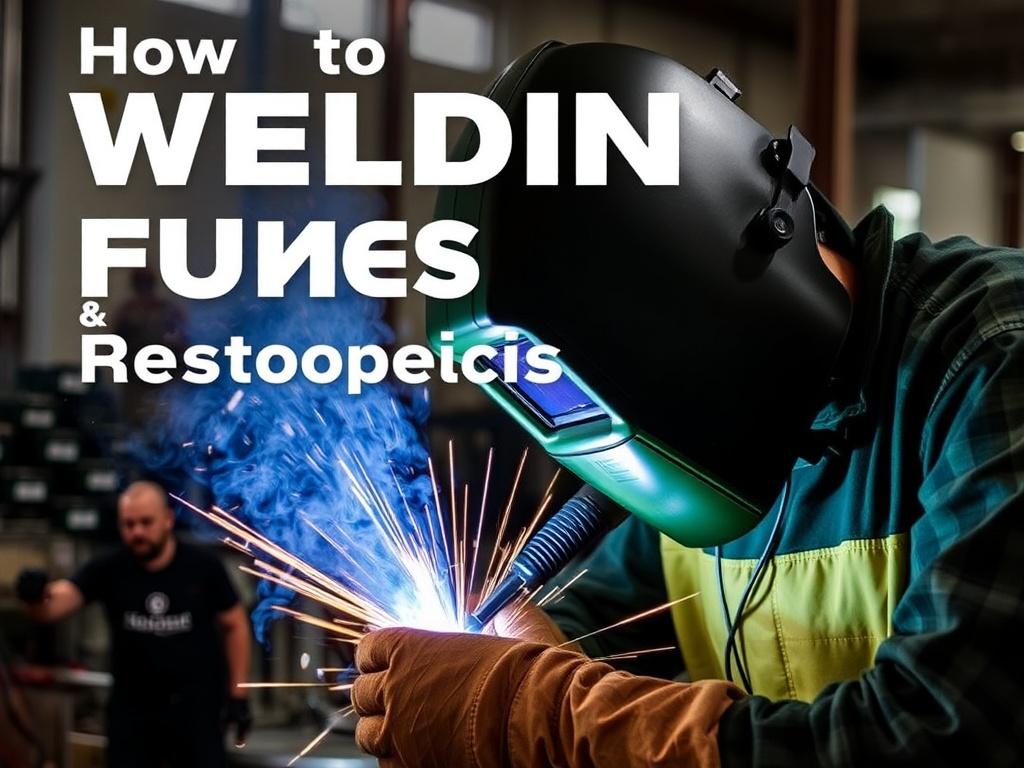
Welding is an essential skill across many industries, from construction and manufacturing to automotive and shipbuilding. However, while welding offers countless benefits, it also poses significant health risks, particularly when it comes to respiratory issues caused by welding fumes. Understanding how to prevent welding fumes and protect your respiratory health is crucial for every welder and anyone working nearby. This article will guide you through everything you need to know about welding fumes, their dangers, and the most effective prevention strategies to keep you safe on the job.
What Exactly Are Welding Fumes?
Before diving into prevention, it’s important to understand what welding fumes really are. Welding fumes are a complex mixture of metallic oxides, silicates, and fluorides created when metals and flux are heated during welding. These tiny particles, often invisible to the naked eye, are suspended in the air and can be easily inhaled.
The composition of welding fumes depends on several factors including the type of welding process you’re using, the materials involved, and the type of welding rods or filler materials applied. For instance, stainless steel welding emits different fume components than mild steel welding. Elements like manganese, chromium, nickel, and zinc are common in welding fumes and can pose specific health risks.
It’s no surprise then that welding fumes are considered a major source of occupational exposure to harmful airborne contaminants.
Common Welding Processes and Their Fume Characteristics
| Welding Process | Typical Fume Composition | Health Risk Level |
|---|---|---|
| MIG (Metal Inert Gas) Welding | Iron oxide, manganese, ozone | Moderate |
| TIG (Tungsten Inert Gas) Welding | Lower fume levels, primarily ozone and nitrogen oxides | Low to Moderate |
| Stick Welding (Shielded Metal Arc Welding) | Heavy in iron oxide, manganese, zinc (if galvanized steel), fluorides | High |
| Flux-Cored Arc Welding (FCAW) | High levels of iron oxide and manganese | High |
As you can see, some processes create more hazardous fume environments than others. But no matter the method, preventing welding fumes and respiratory issues should always be a priority.
Why Are Welding Fumes Dangerous to Your Respiratory Health?

Welding fumes are not just an unpleasant experience; they can cause serious chronic health problems for welders and those around them. When inhaled, these fumes travel deep into the lungs, triggering inflammation, irritation, and over time, potentially leading to severe respiratory diseases.
Here’s what makes welding fumes dangerous:
- Toxic Metals: Many metals found in welding fumes—like hexavalent chromium and nickel—are carcinogenic, meaning they can cause lung cancer.
- Respiratory Irritants: Fumes contain gases such as ozone and nitrogen oxides that irritate the airways and exacerbate conditions like asthma.
- Long-Term Effects: Chronic exposure can lead to chronic bronchitis, reduced lung function, and even pneumoconiosis (a lung disease caused by inhaling dust).
Even short-term welding without proper protection can result in symptoms like dizziness, nausea, throat irritation, and headaches. Pregnant women are especially vulnerable since some metals can harm fetal development. These risks make it imperative for welders to embrace comprehensive prevention techniques as a non-negotiable part of their daily routine.
The Respiratory Diseases Linked to Welding Fumes
| Disease | Cause | Symptoms | Long-Term Implications |
|---|---|---|---|
| Chronic Bronchitis | Continuous exposure to irritants such as iron oxide and ozone | Persistent cough, mucus production, shortness of breath | Permanent lung damage, decreased lung function |
| Asthma | Sensitization to welding fumes, particularly manganese and nickel | Wheezing, chest tightness, coughing | Chronic respiratory issues, attacks triggered by fumes |
| Pneumoconiosis | Inhalation of metal dust particles causing lung scarring | Breathlessness, cough, fatigue | Severe lung impairment, disability |
| Lung Cancer | Exposure to carcinogenic metals such as hexavalent chromium and nickel | Often asymptomatic early, later coughing, weight loss | Potentially fatal |
Practical Strategies to Prevent Welding Fumes and Respiratory Issues
Now that we’ve covered the dangers, the most important question is: how do you prevent welding fumes and protect your lungs effectively? Fortunately, many practical measures can dramatically reduce your exposure and keep you breathing easy.
1. Choose the Right Welding Process and Materials
Since different welding types produce different amounts and types of fumes, choosing the appropriate welding method for your project can minimize fume exposure. For example, TIG welding generally creates fewer fumes compared to stick welding.
Furthermore, avoid welding on galvanized or painted metals when possible, because these coatings release harmful zinc oxide and other toxic fumes when heated.
2. Use Proper Ventilation Systems
Ventilation is one of the most effective ways to prevent welding fumes from accumulating in your workspace. There are three main types of ventilation used in welding:
- Natural Ventilation: Relying on open windows or doors is the least effective and only practical in open or outdoor spaces.
- General Ventilation: This circulation system replaces contaminated air in the entire workspace with fresh air but may not always reduce fumes sufficiently at the source.
- Local Exhaust Ventilation (LEV): The gold standard for welding, LEV systems capture fumes directly at the source using hoods, ducts, and filters to prevent fumes from circulating.
LEV systems are highly recommended in enclosed environments. Positioning an extraction hood close to the welding torch captures fumes immediately, reducing inhalation risk dramatically.
3. Wear the Right Personal Protective Equipment (PPE)
Personal protective equipment is essential when welding fumes cannot be eliminated entirely. Respirators designed specifically for welding provide a barrier against harmful fumes.
Types of Respirators:
| Respirator Type | Description | When to Use | Limitations |
|---|---|---|---|
| Disposable Particulate Masks | Single-use masks filtering particulates such as dust and fumes | Short duration welding with low fume levels | Limited protection against gases and vapors |
| Half-Face Respirators | Reusable masks with replaceable cartridges for dust, fumes, and some gases | Moderate fume exposure; when ventilation is insufficient | May not provide full protection against all toxic gases |
| Powered Air-Purifying Respirators (PAPR) | Battery-powered units delivering filtered air to the welder | High fume exposure, extended welding periods | Cumbersome and require maintenance |
Along with respirators, don appropriate welding helmets, gloves, and protective clothing to keep sparks, heat, and minor particulates away.
4. Implement Work Practices That Reduce Fume Generation
Simple changes in how you approach the welding task can reduce fumegeneration:
- Keep the welding area clean: Remove coatings or rust that could increase fume toxicity.
- Minimize welding duration: Break long welding tasks into shorter sessions to limit fume exposure.
- Use proper shielding gases: Correct gas mixtures reduce unnecessary fume production.
- Adjust welding parameters: Optimize amperage and voltage to avoid excessive fuming.
The Role of Training and Awareness in Preventing Respiratory Issues

Even the best equipment and ventilation systems won’t protect welders effectively if they are not used correctly. Training and awareness are fundamental components of fume prevention strategies. Welders need to understand the dangers of welding fumes and learn the proper use of PPE, ventilation, and safe work practices.
Many organizations require welding safety training that covers topics like hazard recognition, emergency response, respirator use, and maintenance. Regular training refreshers ensure everyone stays up to date and safety measures are consistently applied.
Benefits of Proper Training Include:
- Increasing compliance with safety regulations
- Reducing workplace accidents and illness
- Enhancing productivity through safe practices
- Empowering workers to recognize and address hazards immediately
Whether you are a beginner or a seasoned professional, never underestimate the power of knowledge in protecting your respiratory health.
Monitoring and Medical Surveillance: Staying Ahead of Respiratory Problems
Prevention also involves routine monitoring of the welding environment and welders’ health. Employers should regularly measure fume concentrations to ensure they stay below occupational exposure limits set by organizations like OSHA or NIOSH.
Medical surveillance programs, including periodic lung function tests and health check-ups, help detect early signs of respiratory problems before they develop into severe diseases. Early detection means early intervention, which can save lives and careers.
Summary of Best Practices to Prevent Welding Fumes and Respiratory Issues
| Prevention Strategy | Description | Effectiveness |
|---|---|---|
| Choosing Low-Fuming Welding Methods | Select welding processes and materials that produce fewer toxic fumes | High |
| Proper Ventilation (Especially LEV) | Capture and remove fumes at the source | Very High |
| Use of Appropriate Respirators | Protect lungs where ventilation does not fully eliminate fumes | High |
| Safe Work Practices | Maintain clean equipment, adjust parameters, minimize hazardous coatings | Moderate to High |
| Training and Awareness | Regular education on hazards, PPE use, and safe methods | High |
| Health Monitoring and Medical Surveillance | Early detection of lung issues among welders | Moderate |
Final Thoughts: Your Health Is Your Wealth

Welding fumes and respiratory issues pose real and serious threats to anyone around welding operations. The good news is that with the right knowledge, tools, and habits, these risks are preventable. Remember always to prioritize your respiratory protection by choosing safer methods, applying proper ventilation, using appropriate PPE, adhering to safe work practices, and committing to ongoing training.
Your lungs are priceless—protecting them ensures you can continue welding safely and productively for many years to come. Whether you are burning through metal or supervising a busy workshop, let prevention be the core of your welding routine.
Stay safe, keep learning, and breathe easy!
